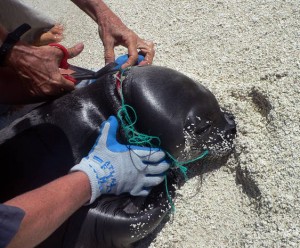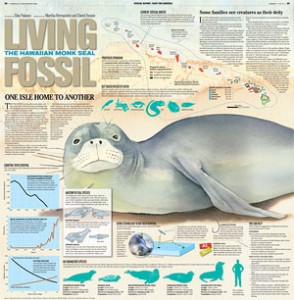Statement, NOAA Fisheries, 10 February 2012
 In 2010 and 2011 NOAA Fisheries staff began to observe a nine-year old monk seal, KE18, attacking newly weaned and juvenile seals at Kure Atoll in the NWHI; causing injuries including lacerations, scratches and puncture wounds on this critical component of the monk seal population. KE18 seriously injured 10 of the 13 pups and an additional three juveniles during the 2010 and 2011 field camps on Kure Atoll. When KE18 transited to Midway Atoll there were two unexplained deaths during his time there.
In 2010 and 2011 NOAA Fisheries staff began to observe a nine-year old monk seal, KE18, attacking newly weaned and juvenile seals at Kure Atoll in the NWHI; causing injuries including lacerations, scratches and puncture wounds on this critical component of the monk seal population. KE18 seriously injured 10 of the 13 pups and an additional three juveniles during the 2010 and 2011 field camps on Kure Atoll. When KE18 transited to Midway Atoll there were two unexplained deaths during his time there.
Continue reading “NOAA removes “aggressive” monk seal from NWHI”


 The huge scale of the Costa Concordia disaster is apparent in this satellite image of the stricken cruise ship just off the Italian island of Giglio.
The huge scale of the Costa Concordia disaster is apparent in this satellite image of the stricken cruise ship just off the Italian island of Giglio.